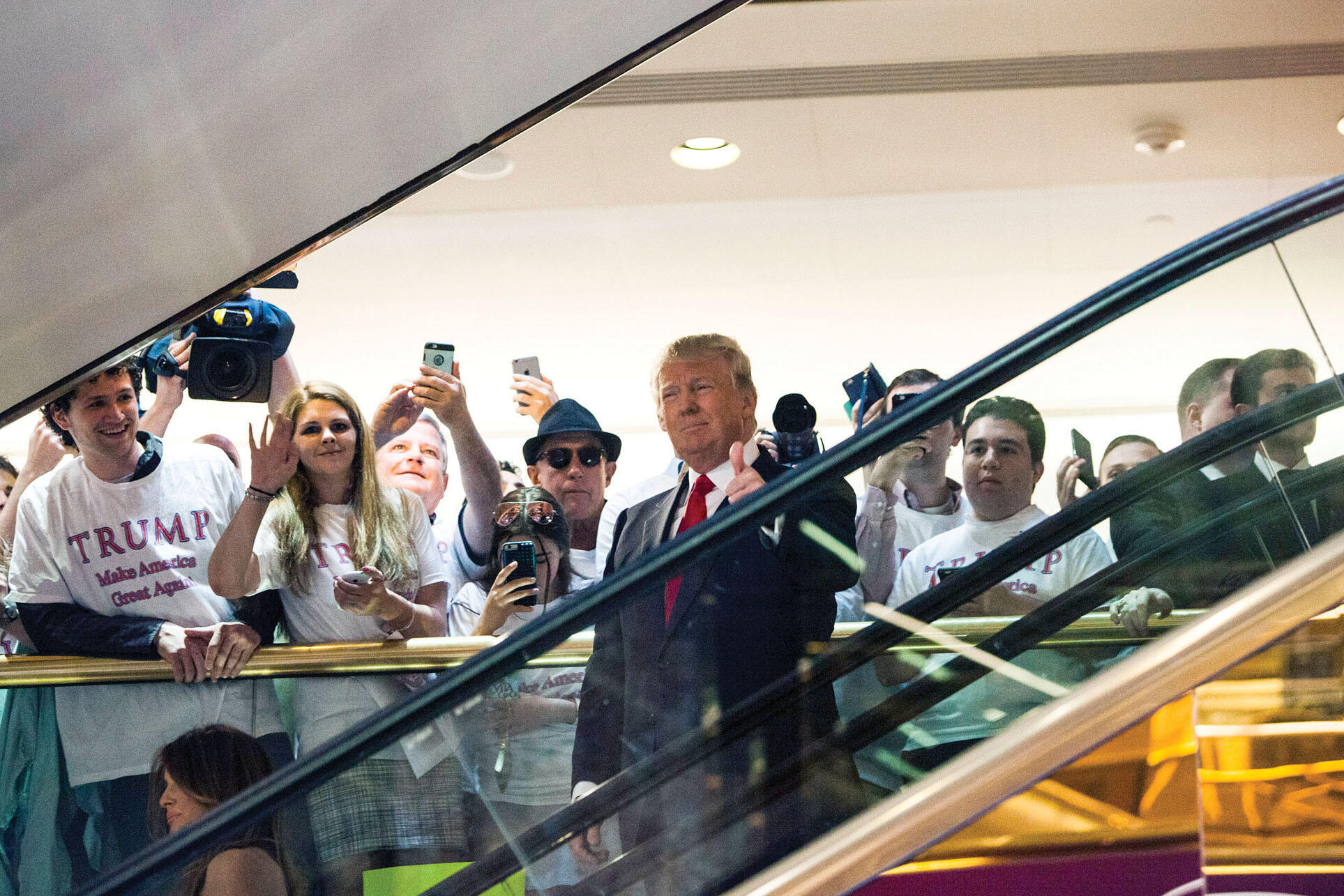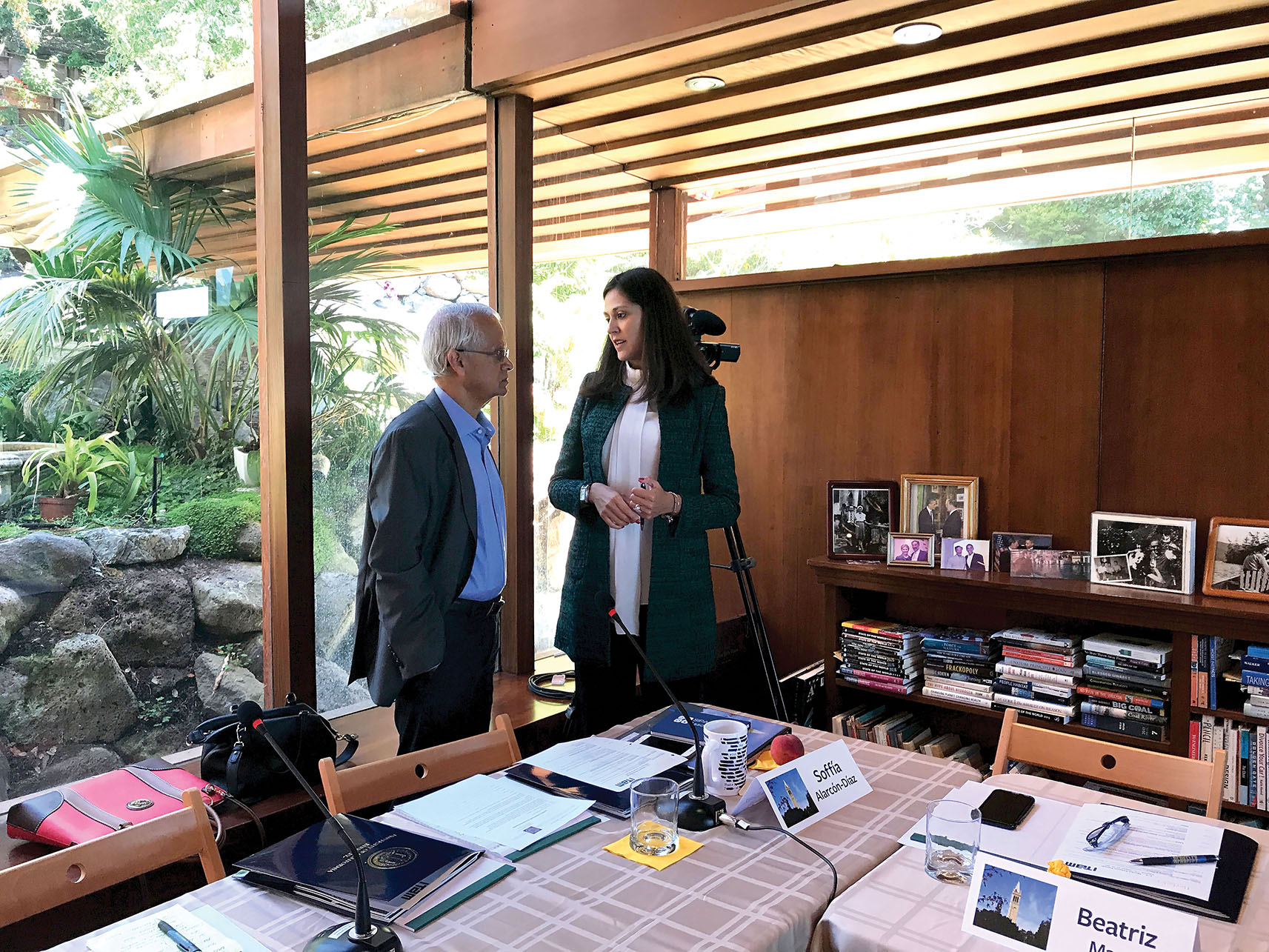The United States and Mexico not only share a 2,000-mile border — walls, fences, and patrols notwithstanding — but will remain highly integrated neighbors, whatever the quality of the relationship. As the great Mexican writer Carlos Fuentes put it, paraphrasing a famed statement by the Mexican dictator Porfirio Díaz a century earlier, “Poor Mexico, and poor United States, so far from God and so close to each other!” That said, the incendiary rhetoric targeting Mexico and immigrants in the run-up to the 2016 U.S. presidential election and much of what has happened since to translate that rhetoric into policies have fueled a hostile atmosphere and put sharp strains on the relationship.
“This period we are living through can be deeply troubling and often surreal,” offered Harley Shaiken, Director of the Center for Latin American Studies (CLAS) at UC Berkeley. The Ninth U.S.–Mexico Futures Forum — hosted by CLAS, August 25-26, 2017, in Tiburon, California — addressed the two countries’ relationship at a crucial juncture for each. While Mexico and the United States “have been through turbulent times,” Shaiken continued, “in my view, this is one of the most critical” moments in the contemporary era. Nonetheless, it is clear this relationship remains central to the future of both countries. Yet, even beyond the U.S. and Mexico, the topics covered during the Forum are imperative global challenges: climate change, migration, security, trade, and wages, as well as the persistent and growing inequality that frames and connects them all.
To shed light on these issues, the Forum brought together diverse and significant voices from a wide array of backgrounds and experiences. Scientists, academics, public office holders, media professionals, and leaders from civil society, labor, and social movements in the U.S. and Mexico all offered their insights. While addressing life-and-death concerns, the Forum was marked by a future-oriented focus that centered as much on thinking imaginatively and brainstorming creative solutions to these complex and interconnected problems as on retrospection and diagnosis. One such suggestion from Shaiken was to look to “California, at the state level,” for “possibilities of how we can move forward” with a more constructive U.S.–Mexico relationship.
Across all of the topics addressed, a few major refrains connected and contextualized the different issues under discussion. One was the global nature of the structural forces at work in the combination of urgent questions at the heart of U.S.–Mexico relations. From climate-driven migration to economic insecurity, many of these subjects are of universal concern. In fact, globalization, along with technological change, is often cited as a primary driver of growing inequality, particularly in the context of international trade and a dramatic increase in the global labor force.
The pressure these forces bring to bear upon institutions was another resonant theme in the Forum. The case of the 43 missing students in Iguala, Mexico, reveals in stark fashion how the black-market money around border enforcement — in this case, drug interdiction strategies — created huge incentives that corrupted the Mexican state at many levels. In another area of concern, the pace of climate change demands nations collaborate to make progress that goes beyond the Paris Agreement. Yet the institutions of state, along with civil society, will need to take the lead in addressing these very pressing problems. In this context, Maria Echaveste, former Deputy Chief of Staff in the Clinton White House and a Senior Scholar at CLAS, asked at the end of the climate change session, “How do we change institutions so there are real possibilities for stability, not just keeping the problems away from our borders?”

Part of that work will clearly be done by non-governmental institutions. The efforts of the Carbon Trust Mexico, led by Soffía Alarcón-Díaz, and the leadership of the Catholic Church on climate change as addressed by Veerabhadran “Ram” Ramanathan, Professor of Atmospheric and Climate Sciences at UC San Diego, stood out as examples of such efforts. Speaking to climate change as Executive Secretary-Treasurer and Chief Officer of the California Federation of Labor, Art Pulaski suggested that since “institutions of faith and institutions of unions have been on the forefront of fighting for workers, we have to be sure to maximize the capacity of those institutions to advance the improvements we want to achieve.”
The varied and complex interconnections among the issues emerged on many occasions during the Forum. Recently returned from conducting ethnographic research and interviewing migrants in Mexico, Stephanie Leutert, Director of the Mexico Security Initiative at the University of Texas at Austin, asked, “How do you separate economic issues versus climate issues?” Honduran migrants in transit through Mexico have explained how changes in rainfall patterns and the degradation of soil quality in their home municipality have ruined their livelihood. Further research revealed that entire communities were being uprooted by such transformations. The ties between climate, migration, security, trade, and wages defy simplistic explanation or narrowly tailored policies.

Inequality: A Long-term and Growing Trend
One factor that informs these complicated dynamics is global economic and social inequality. In an opening presentation, Emmanuel Saez, Professor of Economics at UC Berkeley, reviewed his most recently published research on economic inequality. In sum, the data show that inequality in the U.S. is a growing and ongoing trend. By distributing national income across all adults on both a pre-tax and post-tax basis, Saez constructed comparisons of income inequality and the total effect of government policy on that inequality. This evidence demonstrates that in the United States, total taxes are about one-third of national income, meaning that U.S. society pools a significant share of its income, notwithstanding “free market” rhetoric or policymakers’ stated ideological positions. Yet this significant pooling of income exists alongside growing, near-record income inequality.
The history of the share of national income that goes to the top 10 percent of the income distribution suggests a historical narrative defined by national, social, and economic policy changes. This top 10-percent income share declined from the early 1940s until the 1970s, the period of New Deal and Great Society reforms that economically benefitted large numbers of Americans. The share going to the top then began a steady increase that has continued until the present. Today, the share of national income going to this group has once again reached pre-war levels. However, one major difference in these two structures is that prior to World War II, a mere 10 percent of National Income was pooled in the form of taxes. Now, this great income inequality coexists with a much larger tax and state share of the economy than in the pre-war era.

The key question is the causality behind this trend: what is driving income concentration? Globalization (especially increased and more liberalized rules-based trade), the explosive growth in the global labor force as China and other economies integrated into global production, and technological change are some of the macro-level explanations most typically given. As Saez acknowledged, these factors have certainly played a role in contributing to the trend of income concentration. However, precisely because these are global factors impacting all countries, they cannot tell the whole story. In fact, Saez noted, other countries have not experienced such a dramatic increase in income concentration as the United States. As an example, Saez offered a comparison between the U.S. and France, but his insight is more general: national policy influenced how different countries experienced these global pressures — and any tendency towards inequality they bring. Furthermore, Saez argued, the data shows that national policy affects income inequality at both the pre- and post-tax levels. Through many direct and indirect channels, national policy has many different impacts on society. Thus, a world of widening inequalities helps frame the moment in U.S.–Mexico (and global) relations.
Opening Remarks: Rafael Fernández de Castro
Rafael Fernández de Castro, a professor at the Instituto Technológico Autónomo de Mexico (ITAM), Director of the Center for U.S.-Mexican Studies at UC San Diego, and an expert on the bilateral relationship, stated clearly how he understood the moment: it is “about Trump.” Referring to the 2016 presidential campaign and the then-fledgling administration, Fernández de Castro observed, “Mexico has been a political piñata.” The mobilization of the relationship — and of Mexico itself as a demonized caricature — has taken “an emotional toll on Mexicans,” he explained. Naturally, there is a popular desire to respond more forcefully in return. However, Fernández de Castro argued, the Mexican government had to be cautious, to be firm without jeopardizing crucial Mexican interests. This balance is one that the Mexican administration has been successful in achieving thus far, Fernández de Castro remarked, a state of affairs he called “intense business as usual.” However, this same sentiment has driven political support towards Andrés Manuel López Obrador and his Movimiento Regeneración Nacional (MORENA, National Regeneration Movement) party. His leftist, populist, and nationalist orientation has resonated with many Mexicans, and he took the lead for president in national opinion polls in early September 2017 and has retained this ranking through March 2018.
A second way to look at the current juncture in the relationship is through the lens of recent history. Fernández de Castro sketched the trajectory of the bilateral relationship under the various post-Cold War U.S. presidents, particularly focused on trade and migration legalization accords. The trend he outlined over these decades is one of decline, with the recent G20 conference under the new Trump administration representing a symbolic nadir. While his rhetoric was initially shocking to many Mexicans, “Trump’s threats to Mexico do not have the same value” after a few months in office demonstrated that the administration’s policy seldom matched his bombastic rhetoric, although the threat of rhetoric and policy becoming more aligned remains real.
Finally, Fernández de Castro closed with a sobering reflection. While analyses of the U.S. and Mexico often focus on political or institutional instability in Mexico, concerns once thought implausible, if not impossible, now preoccupy diplomats and leaders the world over regarding such instability in Washington, D.C. “It is not about NAFTA or relations with Mexico,” Fernández de Castro warned. “It is about American democracy; what is at risk is American democracy.” Those things that cause friction in the U.S.–Mexico relationship can easily cause domestic and global turbulence, as well.
James G. Lamb is an instructor in the Department of Sociology at UC Berkeley.

